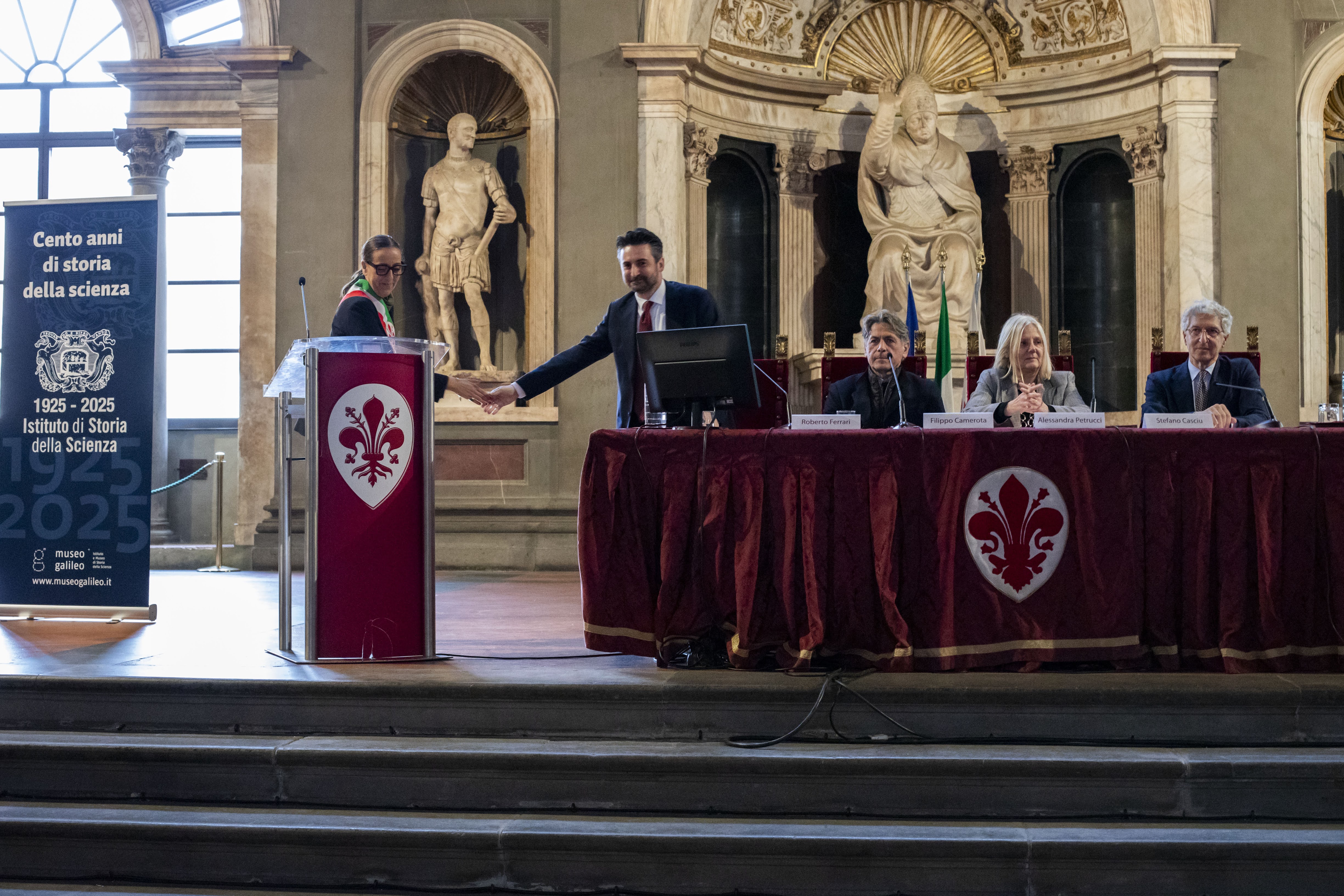
Yesterday, the Salone dei Cinquecento in Palazzo Vecchio hosted the opening of the centenary celebrations of the Istituto di Storia della Scienza.
The day opened at 5 p.m. with greetings from Mayor Sara Funaro, from Stefano Casciu, Regional Director of Museums of Tuscany, representing the Italian Ministry of Culture, and from the Rector of the Florentine University Alessandra Petrucci, followed by speeches from Roberto Ferrari (who read a greeting from the President of the Association of Italian Cultural Institutions) and Filippo Camerota, Executive Director and Scientific Director of the Museo Galileo respectively, who outlined the main steps in the Institute’s history and the most important ongoing projects.
At 6 p.m., the programme continued with a lectio magistralis by Martin Kemp titled “Icons of Science”. Professor Emeritus at Oxford University and a world-renowned art historian, Martin Kemp focused on the relationship between art and science. In his lecture, he examined some powerful iconic images that not only represent a particular discipline, but in some cases have become emblematic of science itself: just think of the DNA double helix.
At 9 p.m., the event ended with “Le lune di Galileo” (Galileo’s moons): a monologue by well-known actor Sergio Rubini based on texts selected by science historian Massimo Bucciantini, which trace one of the most important phases of Galileo’s life, namely the discovery of Jupiter’s satellites in January 1610. Rubini’s monologue is at once a historical account, an inner confession and a manifesto of free thinking, from which Galileo emerges as a modern, tormented figure, forced to choose between truth and prudence, between discovery and silence. The reading was accompanied by musical pieces performed by the Musici della Scala.

 EN
EN  IT
IT 
